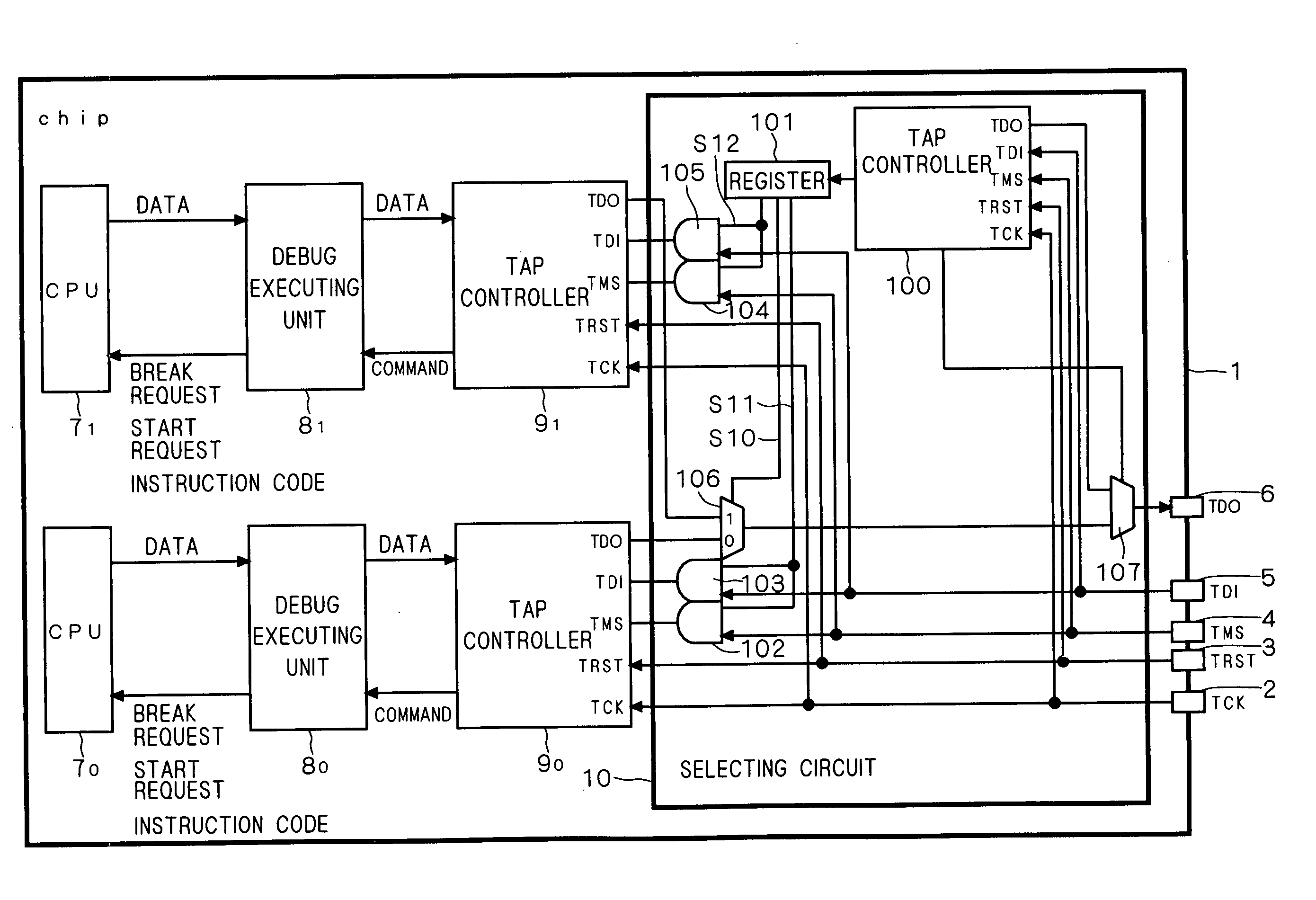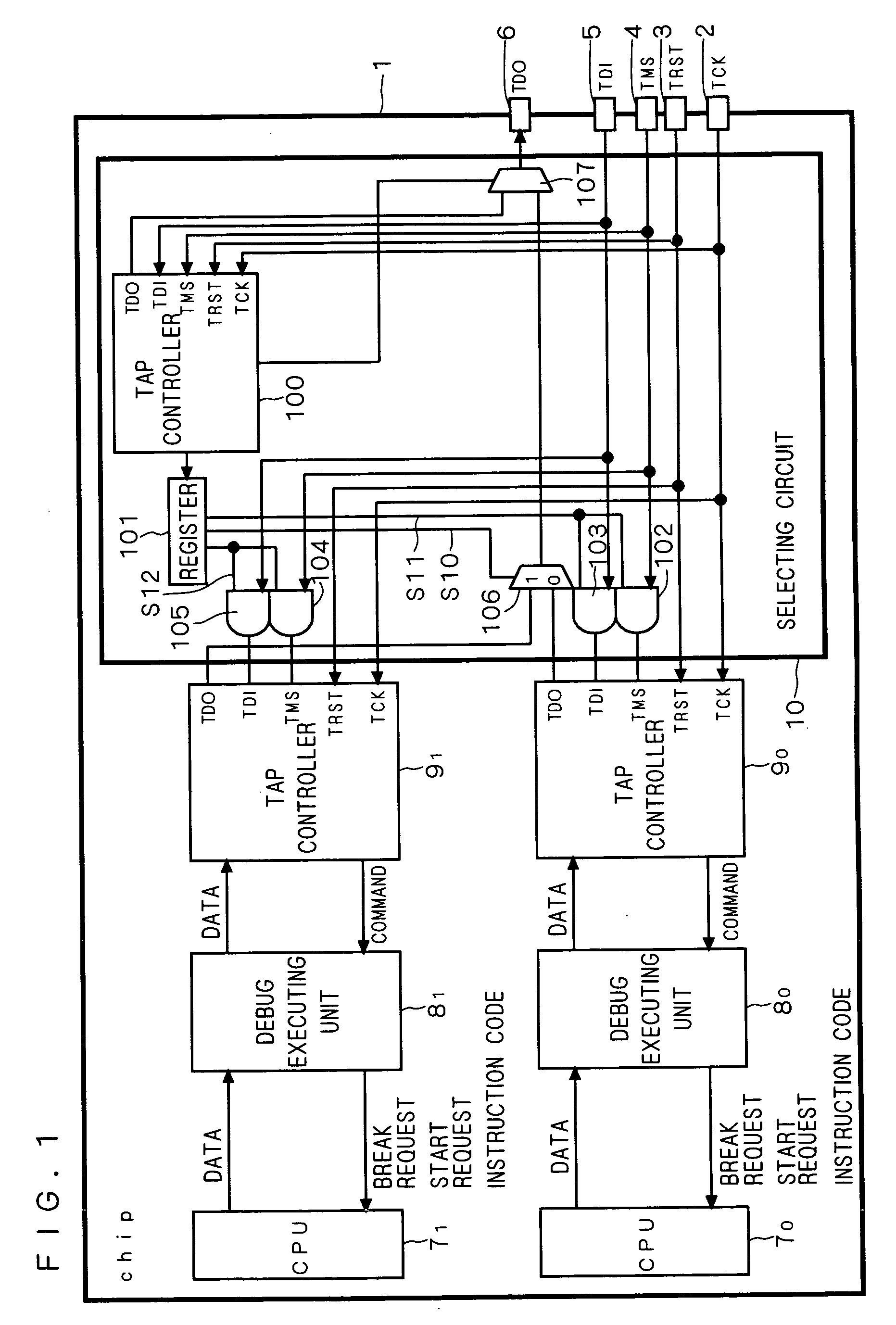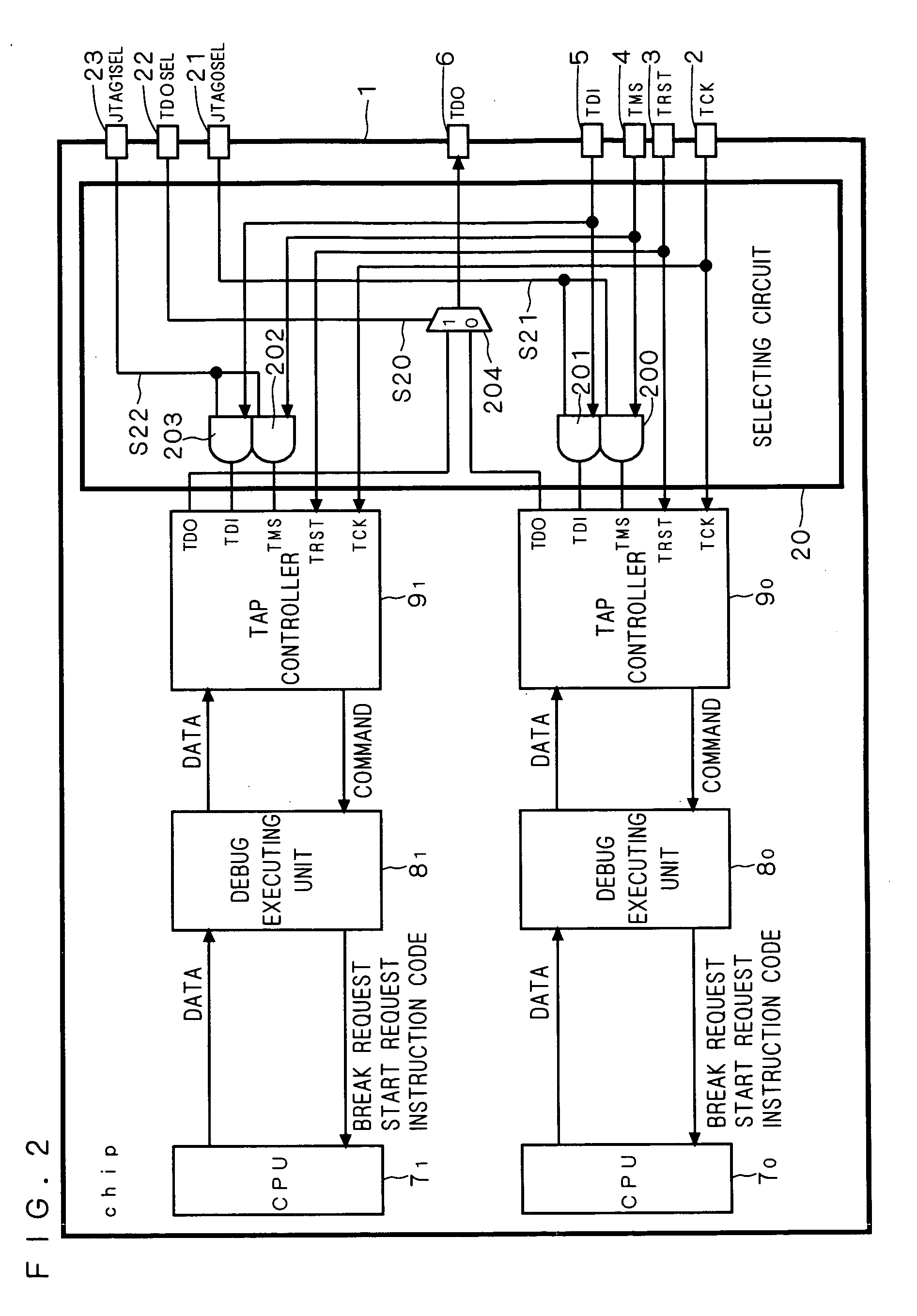Multiprocessor system capable of efficiently debugging processors
a multi-processor system and processor technology, applied in error detection/correction, instruments, digital computer details, etc., can solve the problems of increasing cost and requiring a long debugging tim
- Summary
- Abstract
- Description
- Claims
- Application Information
AI Technical Summary
Benefits of technology
Problems solved by technology
Method used
Image
Examples
first preferred embodiment
[0025] FIG. 1 is a block diagram showing the configuration of a multiprocessor system according to a first preferred embodiment of the invention. A chip 1 has a plurality of CPUs 7.sub.0 and 7.sub.1, debug executing units 8.sub.0 and 8.sub.1 for executing the debugging of the CPUs 7.sub.0 and 7.sub.1, TAP controllers 9.sub.0 and 9.sub.1 for controlling the debug executing units 8.sub.0 and 8.sub.1, a selecting circuit 10 for selecting, from the CPUs 7.sub.0 and 7.sub.1, at least one CPU to be debugged, and a single set of terminals, including terminals 2 to 6. The CPUs 7.sub.0 and 7.sub.1 are connected respectively to the debug executing units 8.sub.0 and 8.sub.1, and the debug executing units 8.sub.0 and 8.sub.1 are connected respectively to the TAP controllers 9.sub.0 and 9.sub.1. The selecting circuit 10 is connected between the TAP controllers 9.sub.0, 9.sub.1 and the terminals 2 to 6. The terminals 2 to 6 are connected to a debugging device (not shown), such as an ICE that conf...
second preferred embodiment
[0039] FIG. 2 is a block diagram showing the configuration of a multiprocessor system according to a second preferred embodiment of the invention. A chip 1 has CPUs 7.sub.0 and 7.sub.1, debug executing units 8.sub.0 and 8.sub.1, TAP controllers 9.sub.0 and 9.sub.1, a selecting circuit 20 for selecting, from the CPUs 7.sub.0 and 7.sub.1, at least one CPU to be debugged, terminals 2 to 6, and terminals 21 to 23.
[0040] The selecting circuit 20 includes AND circuits 200 to 203 and a selector 204. The AND circuit 200 has its first input terminal connected to the terminal 4, its second input terminal connected to the terminal 21, and its output terminal connected to the TMS terminal of the TAP controller 9.sub.0. The AND circuit 201 has its first input terminal connected to the terminal 5, its second input terminal connected to the terminal 21, and its output terminal connected to the TDI terminal of the TAP controller 9.sub.0. The AND circuit 202 has its first input terminal connected to...
third preferred embodiment
[0050] FIG. 3 is a block diagram showing the configuration of a multiprocessor system according to a third preferred embodiment of the invention. A chip 1 has a plurality of CPUs 7.sub.0 and 7.sub.1, debug executing units 8.sub.0 and 8.sub.1, a TAP controller 9 for controlling the debug executing units 8.sub.0 and 8.sub.1, a selecting circuit 30 for selecting, from the CPUs 7.sub.0 and 7.sub.1, at least one CPU to be debugged, and a single set of terminals including terminals 2 to 6. The CPUs 7.sub.0 and 7.sub.1 are connected respectively to the debug executing units 8.sub.0 and 8.sub.1 and the TAP controller 9 is connected to the terminals 2 to 6. The selecting circuit 30 is connected between the debug executing units 8.sub.0, 8.sub.1 and the TAP controller 9.
[0051] The selecting circuit 30 includes a register 300, AND circuits 301 and 302, and a selector 303. The AND circuit 301 has its first input terminal connected to the TAP controller 9, its second input terminal connected to ...
PUM
 Login to View More
Login to View More Abstract
Description
Claims
Application Information
 Login to View More
Login to View More - R&D
- Intellectual Property
- Life Sciences
- Materials
- Tech Scout
- Unparalleled Data Quality
- Higher Quality Content
- 60% Fewer Hallucinations
Browse by: Latest US Patents, China's latest patents, Technical Efficacy Thesaurus, Application Domain, Technology Topic, Popular Technical Reports.
© 2025 PatSnap. All rights reserved.Legal|Privacy policy|Modern Slavery Act Transparency Statement|Sitemap|About US| Contact US: help@patsnap.com



